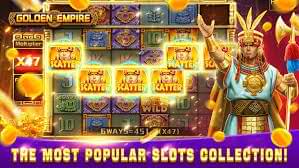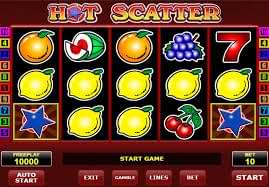


Scatter Games History
The term “scatter” in the context of games typically refers to a game mechanic where items, objects, or elements are distributed randomly or semi-randomly within a game environment. This mechanic adds an element of unpredictability and challenge to gameplay, requiring players to adapt their strategies and decision-making based on the scattered distribution of these elements. While the specific term “scatter” may not have a deep historical record as in other fields, the concept of scattering items in games has evolved alongside the broader history of gaming itself. Here’s an overview of how scattering has been utilized in various types of games over time:
Early Games and Board Games
Traditional Board Games: Even in traditional board games, the distribution of pieces or resources often involves some element of randomness or scattering. For example, in games like Chess or Checkers, the starting positions of pieces can affect gameplay strategy.
Chance and Randomness: Dice and other randomizing elements have long been used in games to introduce chance and scatter outcomes. Games like Backgammon or Snakes and Ladders rely on dice rolls to determine movement, effectively scattering the progress of players.
Table of Contents
Video Games and Digital Scattering
Arcade Games: Early arcade games introduced elements like randomized enemy spawns or scattered power-ups to keep gameplay dynamic and challenging. Games like Pac-Man feature scattered dots that players must collect while evading ghosts.
Role-Playing Games (RPGs): In RPGs, loot and treasure often scatter randomly across dungeons or landscapes. Players must explore and interact with these scattered items to enhance their characters’ abilities or progress in the game.
Strategy Games: Real-time strategy (RTS) and turn-based strategy (TBS) games frequently use scattered resources or units across maps. Players must strategically gather scattered resources and deploy units effectively to achieve victory.
Modern Games and Dynamic Scattering
Open-World Games: In modern open-world games, such as the Grand Theft Auto series or The Legend of Zelda: Breath of the Wild, scattered collectibles, missions, and encounters encourage exploration and discovery.
Battle Royale Games: Games like Fortnite or Player Unknown’s Battlegrounds (PUBG) feature scattered loot and item spawns across a shrinking play area, forcing players into encounters and strategic decisions based on the scattered resources available.
Future Trends and Innovations
Procedural Generation: With advancements in procedural generation technology, games can dynamically scatter environments, quests, and challenges based on algorithms and player interactions, enhancing replay ability and unpredictability.
Augmented Reality (AR) and Virtual Reality (VR): Emerging technologies like AR and VR are exploring new ways to incorporate scattering mechanics into immersive gaming experiences, blending virtual and real-world elements.

Historical Foundations: From Dice to Digital Realms
Early Origins in Scatter Games
Scatter Games can be traced back to ancient board games and tabletop games where dice and random elements played pivotal roles in shaping gameplay outcomes. Games like Chess, Go, and Backgammon employed dice or randomized pieces to introduce chance and strategy, laying the groundwork for future developments in gaming mechanics.
Evolution in Scatter Games
In the mid-20th century brought new possibilities for games mechanics. Early scatter games, such as Pac-Man (1980), utilized scattered dots and randomized enemy movements to create dynamic and challenging gameplay experiences. These foundational games set the stage for the integration of scatter mechanics into various genres, from action-adventure to role-playing games (RPGs) and beyond.
Payment Methods – Banking Options & E-Wallets
Here are the key details on withdrawals:
| Method | Minimum | Maximum | Processing Time | Fee |
|---|---|---|---|---|
| E-wallet | ₱100 | ₱50,000 | 1-3 Hours | None |
| Online Banking | ₱500 | ₱100,000 | 1-3 Business Days | ₱100 fee per transfer |
| Bank Transfer | ₱1,000 | ₱250,000 | 3-5 Business Days | 1% fee on amount |
Login
| Step | Action |
|---|---|
| 1. Visit | Go to the Mega Sabong website or app |
| 2. Enter | Input your username and password |
| 3. Secure | Use two-factor authentication |
| 4. Access | Enter into the gaming world |
Types and Applications of Scatter Games Mechanics
1. Randomized Loot and Rewards
Scatter Games mechanics are often employed to scatter loot, items, and rewards across expansive worlds or dungeon environments. Players must explore, scavenge, and strategically collect scatter games resources to enhance their characters’ abilities or advance through the game’s narrative.
2. Dynamic Enemy Placement
In tactical and strategy of games mechanics dictate the placement and behavior of enemies or opposing forces. Scatter games like XCOM: Enemy Unknown (2012) utilize scattered enemy units to challenge players’ tactical prowess and decision-making, forcing adaptive strategies based on unpredictable encounters.
3. Procedural Generation and Exploration
Emerging technologies in procedural generation have revolutionized how scatter games mechanics are implemented in modern gaming. Scatter Games like Minecraft (2011) and No Man’s Sky (2016) leverage procedural algorithms to scatter games vast, procedurally generated worlds filled with randomly placed resources, landscapes, and encounters, offering infinite possibilities for exploration and discovery.
4. Battle Royale and Scatter Games
The rise of battle royale scatter games exemplified by titles such as Fortnite (2017) and PUBG (2017), epitomizes the strategic application of scatter mechanics. These scatter games weapons, equipment, and essential resources across shrinking play areas, driving intense player engagements and strategic decisions based on randomly scattered loot spawns.

Impact on Gameplay and Player Engagement
1. Enhanced Replay ability and Variability
Scatter games inject a sense of unpredictability and variability into gameplay experiences, fostering replay ability as players encounter new challenges and opportunities with each playthrough. The randomized distribution of elements keeps gameplay fresh and dynamic, encouraging experimentation and strategic adaptation.
2. Strategic Depth and Decision-Making
The strategic implications of scatter games mechanics challenge players to think critically and adaptively. Whether navigating randomized dungeons in RPGs or engaging in tactical battles in strategy of scatter games, players must devise flexible strategies to effectively manage scattered resources, foes, and opportunities.
3. Immersive Exploration and Discovery
Scatter games often prioritize exploration and discovery, inviting players to traverse vast, randomly generated landscapes or uncover hidden treasures scatter games across dynamic environments. This sense of exploration enhances immersion, as players uncover new secrets and stories within unpredictably scattered worlds.

Technological Advancements and Future Trends
1. Advancements in Procedural Generation
Scatter Games continued advancements in procedural generation technology promise to expand the scope and complexity of games. Future scatter games may leverage advanced algorithms to create more intricately detailed and dynamically scattered environments, further blurring the line between scripted content and emergent gameplay experiences.
2. Integration with Augmented Reality (AR) and Virtual Reality (VR)
The integration of scatter games mechanics with AR and VR technologies opens new avenues for immersive gaming experiences. AR games could scatter games virtual objects and challenges in real-world environments, while VR scatter games could immerse players in dynamically generated worlds filled with randomized elements, enhancing realism and interactivity.
3. Emerging Gameplay Paradigms
Scatter Games evolves mechanics are likely to play a pivotal role in shaping emerging gameplay paradigms. From cooperative multiplayer experiences to narrative-driven adventures, scatter will continue to innovate, offering diverse and engaging experiences that resonate with a global audience of gamers.

Withdrawal Methods
Here are the key details on withdrawals:
| Method | Minimum | Maximum | Processing Time | Fee |
|---|---|---|---|---|
| E-wallet | ₱100 | ₱50,000 | 1-3 Hours | None |
| Online Banking | ₱500 | ₱100,000 | 1-3 Business Days | ₱100 fee per transfer |
| Bank Transfer | ₱1,000 | ₱250,000 | 3-5 Business Days | 1% fee on amount |
Conclusion
Scatter Games represent a dynamic and evolving frontier in the landscape of gaming. From their humble origins in traditional board games to their transformative impact on modern digital and video games, scatter games mechanics have reshaped how players engage with virtual worlds, challenges, and narratives. As technology advances and creative boundaries expand, the future of games holds promise for even more immersive, unpredictable, and captivating gaming experiences. Whether exploring vast procedurally generated landscapes, mastering tactical encounters, or uncovering hidden treasures in randomized dungeons, scatter continue to captivate and challenge players worldwide, forging new paths in the ever-expanding universe of interactive entertainment.
You May Also Want:
- Dark Gold 777
- The SLOTSLV: FREE 180 EVERYDAY PLAY NOW!
- Cgebet Online Casino
- GGBet Online Casino
- PCSO E-Lotto
- Laro88 Casino
- BetKFC
- kaswerte
- 99Fortune
- Milyo88
- Milyon88cc Bingo
- Milyon88cc Fishing Game
- Milyon88cc Casino
- Milyon88cc News
- Milyon88cc Uaap
- Milyon88cc tekken
- Milyon88cc disclaimer
- Milyon88cc elotto faqs
- Milyon88cc bendito casino
- Milyon88cc Mpl PH
- Milyon888
- Pokerstars
- ye7 Bonus
- Kaswerte

Leave a Reply